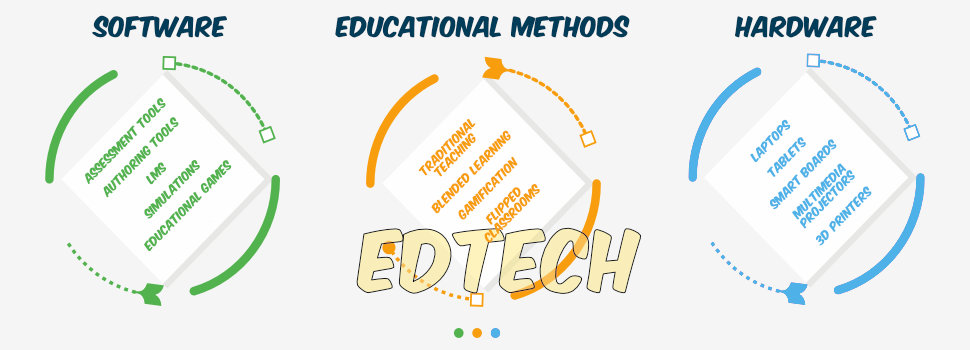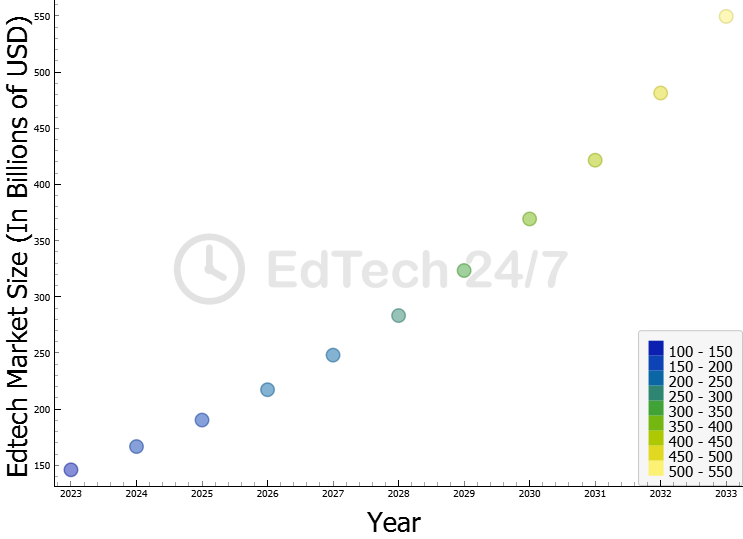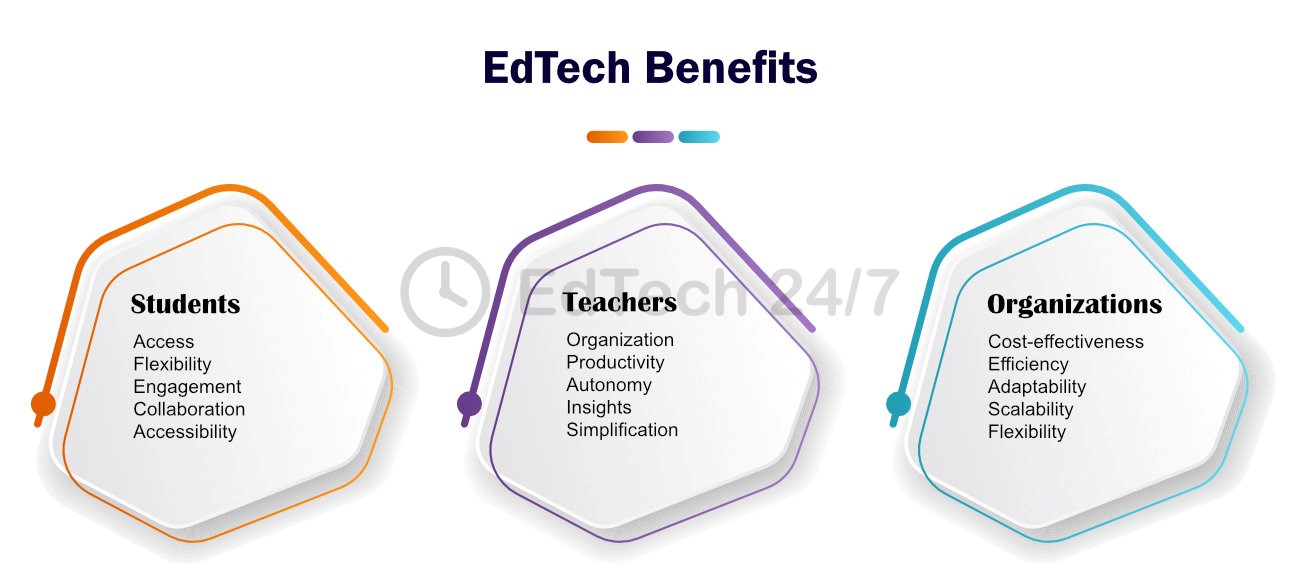
Beyond Guesswork: Grounding LLMs in Facts
All large language models (LLMs) have two fundamental limitations: LLMs lack knowledge of events that occurred after their training date, a phenomenon …
Read More
Edtec and edutech are the abbreviated forms of the term educational technology. Edtech refers to the combined use of computer hardware, software, and teaching methods to enhance learning. In other words, it is the use of technology to facilitate teaching and learning in and out of the classroom.
No Time? Listen to the Audio Deep Dive!
The value of the global edtech market in 2023 was around $146 billion according to market.us. The edtech market is expected to grow at a compound annual growth rate (CAGR) of 14.2% from 2023 to 2033. With this growth rate, the edtech market will reach $549.6 billion by 2033. The same report notes that the growth of the edtech market is due to several factors such as:
It is also worth noting that the pandemic has had a significant impact on the edtech market. The pandemic made many schools and universities shift to online learning. This has led to a surge in demand for edtech solutions. It has also accelerated the adoption of technology in the classroom.

One of the major advantages of edtech is that it can provide students with access to a wide range of educational materials that would otherwise be unavailable to them. For example, online learning platforms can provide students with access to lectures and course materials from top universities around the world.
Various interactive media and apps make learning more fun and engaging. Simulations and exercises can help students grasp complex ideas.
Online learning management systems LMSs can remove the time and location constraints from the learning environment. LMSs can also strengthen the relationship between teachers and students. With LMSs, students can discuss, share their opinions and act more collaboratively with their peers and teachers.
Being able to learn whenever and wherever is a great opportunity for part-time students and those who are unable to be in a specific class at a specific time. Connected devices with Wi-Fi or cellular data allow students to access and complete their work at their own pace. Instant messaging (IM) apps and other forms of communication make it easier for students to communicate with their peers and teachers. IM can also lower the communication barrier for students who are shy about seeking help face-to-face.
In a traditional teacher-centered class, students spent most of their time in the classroom listening to lectures. In this setup, most of the problem-solving and other projects are left for homework preventing active collaboration among peers. When content is delivered through an LMS, students get a chance to digest materials at their own pace. This also frees up physical classroom time for group work and projects that require active collaboration among students. Such a setup leads to a “filliped” classroom that fosters student-centered self-learning.
Edtech tools can be an enabler for students with physical or mental disabilities.

Edtech helps teachers become more organized and productive. Edtech tools are designed to enhance collaboration among teachers, students, and parents. For, example teachers can use LMSs to share resources and assignments and to communicate with students and parents in real-time.
Edtech solutions help simplify and automate many routine tasks teachers face daily. For instance, much of the time teachers spent on following administrative tasks can be freed up.
Teachers can also save quite a bit of time with question banks and auto-graded quizzes. Most modern LMSs come with built-in question banks that support importing and exporting questions in multiple formats. They also support auto-grading of many question types including multiple choice (MCQ), true-false, matching, numerical, fill in the blanks, and drag and drop.
Edtech can also provide teachers with greater flexibility in terms of when and where they teach. Offloading some of the face-to-face lectures to an LMS can free up much-needed classroom time for interactive group work. With learning analytics, teachers can gain insights into students’ learning processes. This leads to better identification of learner needs. Teachers can also use adaptive lessons to manage learners with different levels of ability.
Edtech solutions can save time and money for any organization. Companies of all scales use LMSs and other edtech tools to remain competitive. Edtech tools are used for onboarding new hires, training employees, and continuous career development.
Using an LMS is a lot more cost-effective than organizing presentations, workshops, and conferences as training needs arise. An LMS is a great place to store employees’ code of conduct, employees’ roles and responsibilities, privacy guidelines, and harassment policies. In a traditional setting, keeping training materials up-to-date can be quite challenging. Dated content can also hurt employee performance. With an online system, it is fairly easy to update the training materials.
When it comes to learning, everyone is different. Individuals have different paces and styles of learning. A self-paced training delivered through an LMS is a great way to get everyone on the same page. Oftentimes, it is not possible to get all employees to the same location for training. This leads to situations where some remote workers miss out on training opportunities. Virtual training can provide everyone access to training regardless of where they are.
Employee training can also be improved through simulations and game-based learning techniques. Better training ensures the retaining of skills and techniques within the company. Being able to track results is another benefit of edtech.
To sum up, the dynamic landscape of edtech is reshaping education at all levels. With the global edtech market projected to soar to $549.6 billion by 2033, it’s evident that technological innovations are revolutionizing learning experiences.
Students reap the benefits of edtech through enhanced accessibility, interactive learning, and collaborative opportunities. Teachers gain efficiency, flexibility, and valuable insights into student progress. Organizations, in turn, capitalize on cost-effective training solutions, ensuring skill retention and continuous development. As technology evolves, the transformative power of edtech continues to drive educational advancements worldwide.

All large language models (LLMs) have two fundamental limitations: LLMs lack knowledge of events that occurred after their training date, a phenomenon …
Read More
Advances in large language models made it easier for us to write and edit text, helping us create better content with less effort. However, relying …
Read More